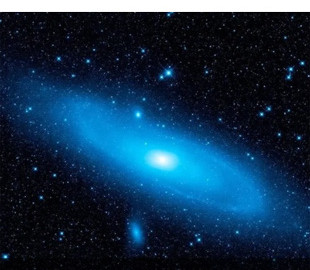
A variation of quantum gravity theory that combines quantum physics and Einstein's general theory of relativity may solve one of cosmology's biggest mysteries. Live Science writes about it.
Briefly: scientists have known for centuries that the universe is expanding. But recent decades of physics have revealed that different types of measurements of the speed of this expansion lead to inexplicable inconsistencies. To allow such a paradox, a new study proposes to include quantum effects in one known theory used to determine the rate of expansion.
More details: Astronomer Edwin Hubble first spoke about the expansion of the universe back in 1929. His observations with the largest telescope of the time suggested that galaxies located further from Earth are moving away from us at an even greater speed. In the 20th century, astrophysicists introduced a new method for determining the rate of expansion by studying the microwave background after the Big Bang.
But there was a problem with these types of measurements. The new method gave a value almost 10% lower, compared to the one obtained as a result of astronomical observations of distant space objects. Such discrepancies signal potential flaws in our understanding of the evolution of the universe.
A new study provides a solution to reconcile the disparate results. The scientists emphasized that they are inferring an evolutionary model of the universe based on Einstein's general theory of relativity. They suggested making changes taking into account quantum effects. Such effects include random field fluctuations and the spontaneous birth of particles from the vacuum of space.
Too hard? The theoretical explanations of the work showed that taking into account quantum effects in the descriptions of gravitational interactions during cosmic inflation changes the predictions of the theory of relativity of the properties of relict radiation. Simply put, both values of the so-called "Hubble constant" in this case coincide.

